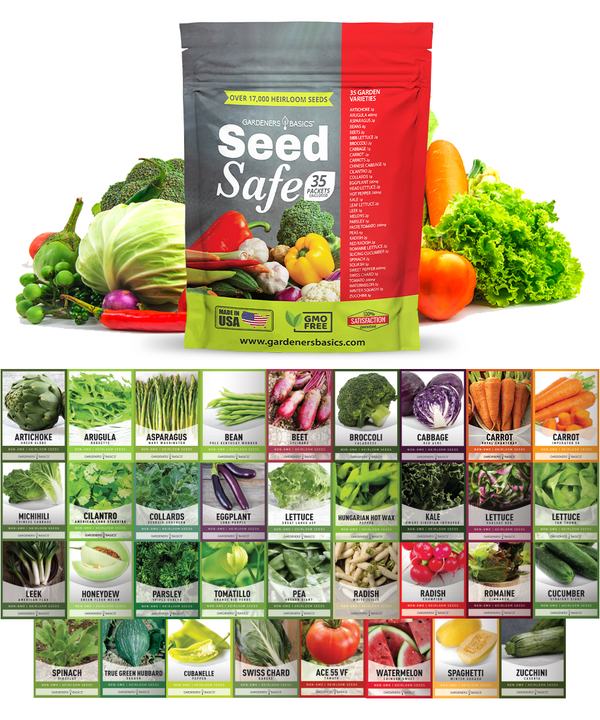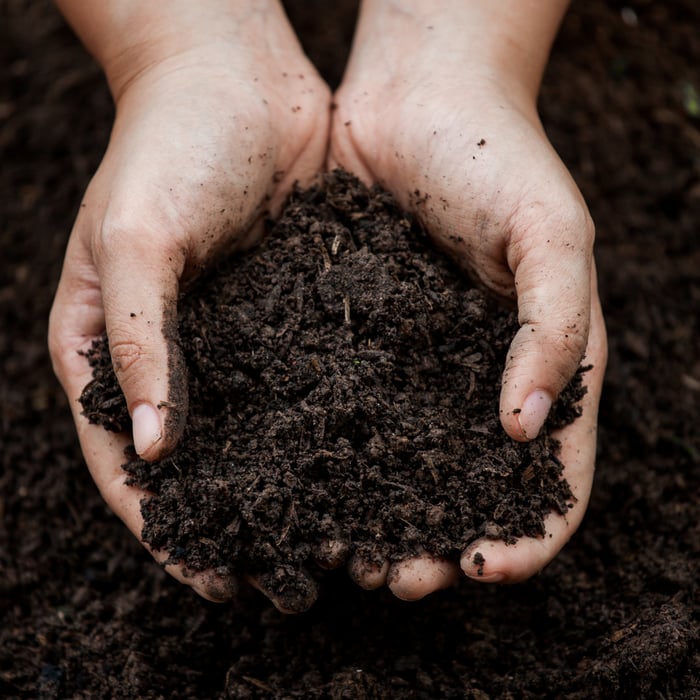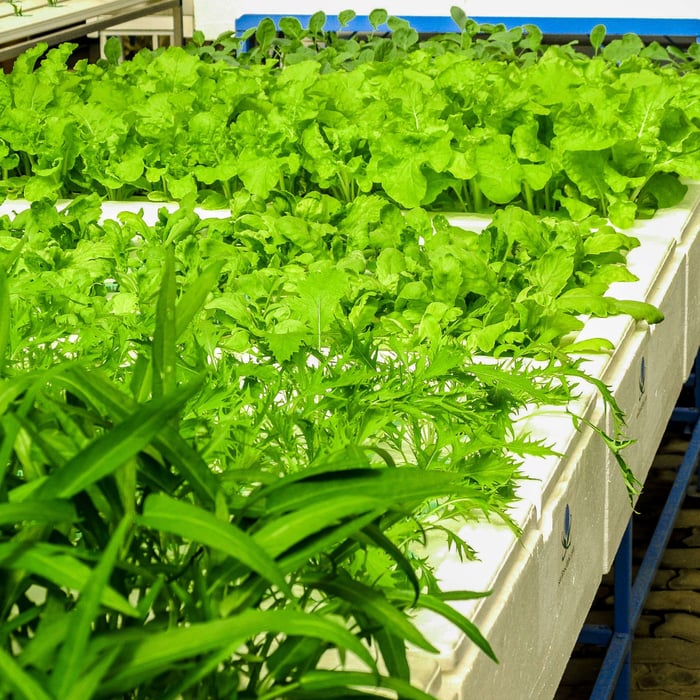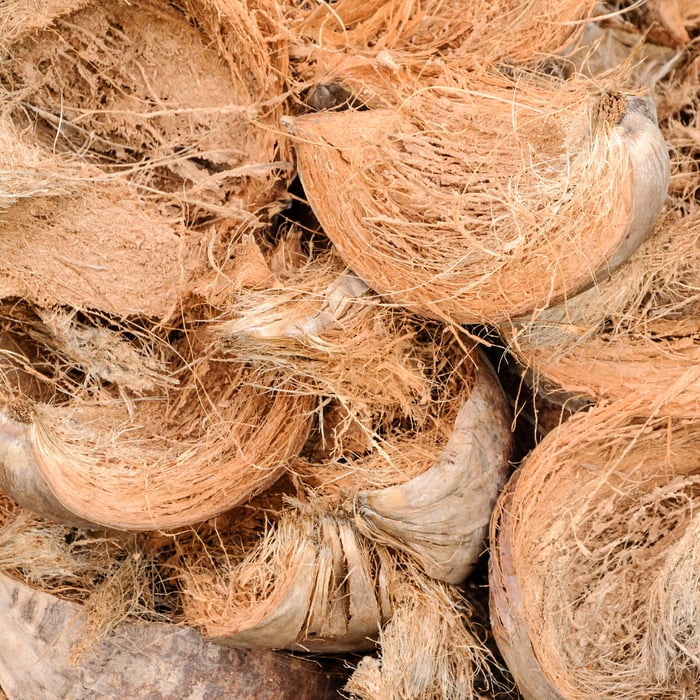As a gardener, you know that soil health plays a significant role in plant growth. Poor drainage is a common problem for many gardeners that can cause stunted growth, root rot, and plant death. Don't let your poor draining soil get you down; we can amend and improve your growing conditions. However, you can increase plant growth with Gardener's Basics tips for improving soil drainage. Let's dive in and learn how to fix poor draining soil!
Understanding Poor Drainage
Poor drainage occurs when water cannot drain through the soil, causing water to accumulate in the root zone. This problem can result from several factors, including soil aggregation, compaction, and soil particle size. If water is pooling on the soil surface or your plants show signs of stress, your garden may have poor drainage.
Improving Soil Drainage
You can improve soil drainage in several ways. One effective method is by building a rain garden. A rain garden is a shallow depression that captures and filters stormwater runoff. Directing rainwater away from your garden and into a rain garden can improve drainage while protecting the environment.
You can dig a hole in your garden soil and fill the gap with water. If the water drains quickly, your soil is well-drained. Your soil is poorly drained if the water drains slowly or not at all. If you discover poor drainage, you can take steps to improve it.
Vegetable Seed Vault Kit | 35 Variety Pack

$29.95
$49.95
Ultimate Survival Seed Vault: 16,000+ Non-GMO Heirloom Vegetable Seeds for Emergency Preparedness Introducing the Seed Vault Kit, your all-in-one solution for emergency preparedness and sustainable gardening. This premium seed kit contains over 16,000 non-GMO, Heirloom, Non-Hybrid, and Open Pollinated seeds,… read more
Increasing Soil Drainage
- Improve Soil Structure: Organic matter, such as compost or leaf litter, can improve soil aggregation, improving drainage. Add organic matter to the soil to improve soil structure and increase drainage.
- Prevent Compaction: Compacted soils lead to poor drainage. Avoid walking on garden soil when it is wet to prevent compaction. Consider adding coarse sand or perlite to improve drainage if you have heavy clay soil.
- Dig Drainage Trenches: If you have areas with poor drainage, consider digging drainage trenches. These trenches should be 12 inches deep and filled with gravel or coarse sand. Ensure the grooves are angled away from your garden to direct water away from your plants.
- Fill the Hole: In areas of poorly drained soil, dig holes and fill them with gravel or coarse sand to create a drainage layer. This will allow water to drain away from the root zone.
Determining Soil Drainage Rate
Conduct a soil drainage test to determine how quickly water drains through your soil. Dig a hole in your garden soil at least 6 inches deep and 6 inches wide. Fill the void with water and let it drain completely. Once the spot is empty, fill it with water again and time how long it takes to drain completely. The ideal drainage rate for most plants is between 1 and 6 inches per hour.
Build a Rain Garden
Building a rain garden can be an effective way to improve drainage in your garden. A rain garden is a shallow depression that captures and filters stormwater runoff. The rain garden should be located in a low-lying area of your garden, away from your plants. By directing rainwater away from your garden and into a rain garden, you can improve drainage and reduce erosion and pollution.
Improve Soil Structure
Organic matter is an effective way to improve soil structure and increase drainage. Adding compost or leaf litter to the soil can improve soil aggregation, which helps water to move more freely through the mud. Additionally, organic matter can help to prevent soil compaction, which can also lead to poor drainage.
Seed Safe Survival Seed Kit - 35 Variety Pack

$29.95
$49.95
Seed Safe Survival Seed Kit: The Ultimate Heirloom Collection for Self-Sufficient Gardening Introducing the Seed Safe - 35 Varieties of Heirloom Vegetable, Herb, and Fruit Seeds, the ultimate solution for gardeners who want to secure a bountiful future harvest. This… read more
Digging Drainage Trenches
If you have areas in your garden with poor drainage, you can dig drainage trenches into improving drainage. Dig trenches at least 12 inches deep and fill them with gravel or coarse sand. The tracks should be angled away from your garden to direct water away from your plants. The channels help to provide a path for water to flow away from your garden and prevent it from accumulating in the root zone of your plants.
Adding Coarse Sand or Perlite
If you have heavy clay soil, it can be challenging to improve drainage. One way to increase drainage in rich clay soil is by adding coarse sand or perlite. Coarse sand or perlite can help to improve soil structure by creating larger spaces between soil particles, allowing water to drain more easily.
Using Raised Beds
Raised beds are another option for improving drainage in your garden. Raised beds are essentially garden beds that are elevated above the ground. You can improve drainage by promoting the garden bed because water can flow more easily from the raised bed. Additionally, raised beds can be filled with well-draining soil, which can help to prevent poor drainage in the future.
Avoiding Overwatering
Overwatering can contribute to poor drainage in your garden. When you overwater your plants, water can accumulate in the root zone, causing poor drainage. To avoid overwatering, ensure that you water your plants only when necessary. Additionally, ensure that your garden has adequate drainage by following the steps outlined in this article.
Conclusion
Poor drainage can significantly impact plant growth and heirloom seeds in your garden. Fortunately, several Gardener's Basics tips can be used to improve drainage in your garden. Building a rain garden, improving soil structure, digging drainage trenches, and adding coarse sand or perlite can all help improve your garden's drainage. Additionally, using raised beds and avoiding overwatering can help to prevent poor drainage in the future. By taking these steps, you can create an environment conducive to healthy plant growth and a thriving garden. We hope that you know how to fix poor draining soil now.
Frequently Asked Questions
Q: What causes poor drainage in soil?
A: Poor drainage can result from several factors, including soil aggregation, compaction, and soil particle size. When water cannot drain through the soil, it can accumulate in the root zone, leading to poor growing conditions.
Q: How can I improve soil drainage?
A: There are several ways to improve soil drainage, including building a rain garden, improving soil structure with organic matter, digging drainage trenches, adding coarse sand or perlite, and using raised beds. Additionally, you can conduct a soil drainage test to determine how quickly water drains through your soil.
Q: How do I know if my soil has poor drainage?
A: If water is pooling on the soil surface or your plants show signs of stress, such as yellowing leaves or stunted growth, your garden may have poor drainage. You can also fill a hole in your garden soil with water. If the water drains quickly, your soil is well-drained. Your soil is poorly drained if the water drains slowly or not at all.
Q: What is a rain garden?
A: A rain garden is a shallow depression that captures and filters stormwater runoff. By directing rainwater away from your garden and into a rain garden, you can improve drainage and reduce erosion and pollution.
Q: How often should I water my plants?
A: Overwatering can contribute to poor drainage in your garden. Ensure that you water your plants only when necessary to avoid overwatering. Additionally, ensure that your garden has adequate drainage by following the steps outlined in this article.
Q: Can I use a mulch to improve soil drainage?
A: Mulch can help improve soil drainage by preventing soil compaction and improving soil structure. However, ensure that you use mulch correctly to avoid over mulching, which can lead to poor drainage.
Q: Can poor drainage be fixed?
A: Yes, poor drainage can be fixed. By following the Gardener's Basics tips outlined in this article, you can improve drainage in your garden and create an environment conducive to healthy plant growth.
Q: How long does it take to improve soil drainage?
A: The time it takes to improve soil drainage depends on the severity of the problem and the steps you take to address it. However, with proper soil management practices, you should begin to see improvements in soil drainage within a few months.







